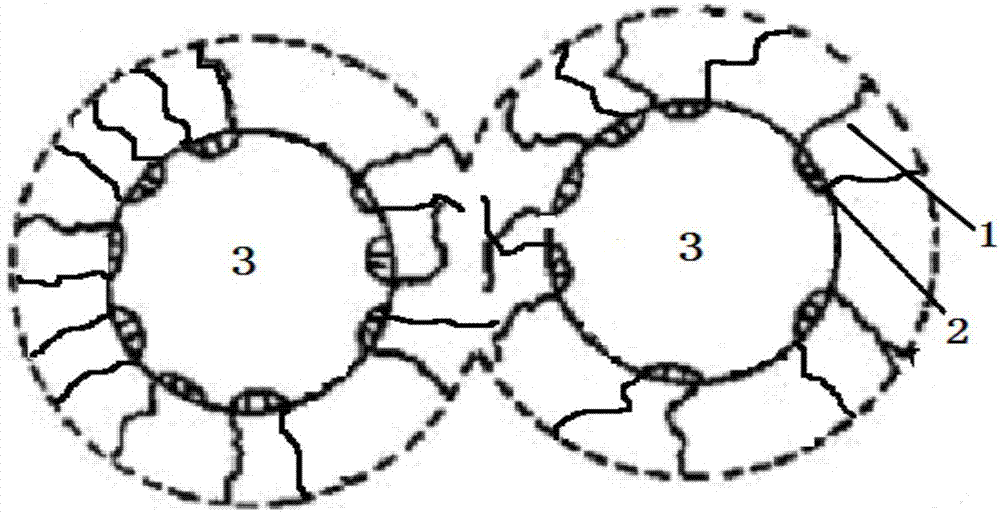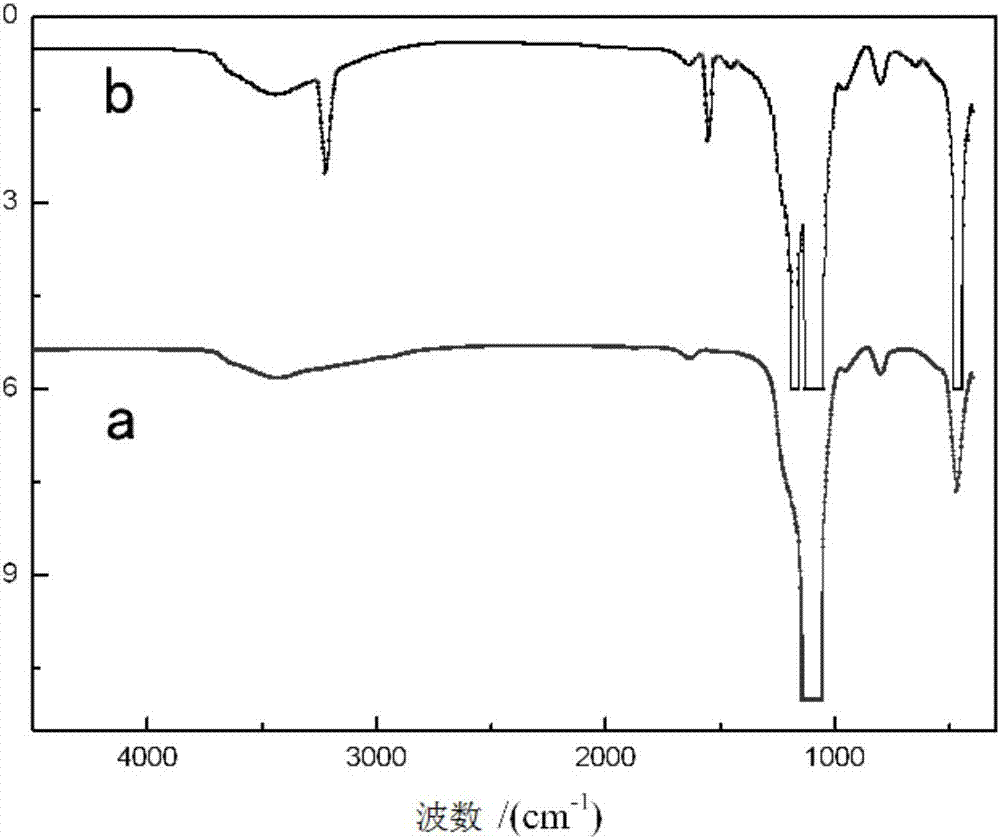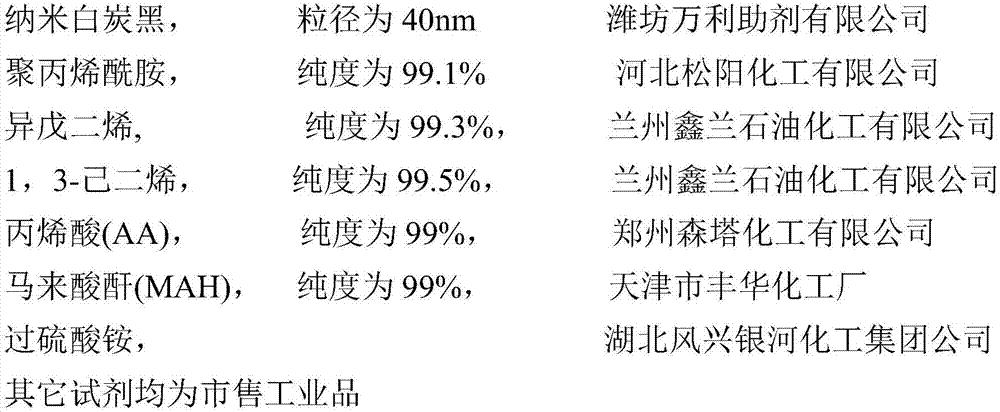Modification method of nanometer white carbon black
A nano-silica, modification technology, applied in the field of preparation of modified synthetic rubber filler nano-silica to achieve ultra-dispersion, can solve problems such as easy agglomeration
- Summary
- Abstract
- Description
- Claims
- Application Information
AI Technical Summary
Problems solved by technology
Method used
Image
Examples
Embodiment 1
[0033] (1) Preparation of monomer pre-emulsion: 100 parts of isoprene, 5 parts of sodium dodecylbenzenesulfonate, 150 parts of deionized water, 1.0 part of sodium hydroxide, and 0.01 part of ammonium persulfate were put together In the reactor, when the temperature was raised to 40° C., the reaction was stirred for 40 minutes to prepare isoprene pre-emulsion a.
[0034] (2) Preparation of compound polar monomer mixture: put 100 parts of acrylic acid (AA) and 20 parts of acrylamide into the reactor and stir and mix for 5 minutes, then add 50 parts of deionized water and 1.0 part of sodium hydroxide, and then Stir and mix for 10 minutes to form the compound polar monomer mixture a. (pH of the mixture a=7.6)
[0035] (3) Preparation of modified nano-silica: Take 100 parts of nano-silica (40nm) and 10 parts of polar monomer mixture a, 200 parts of deionized water, and 1.0 part of sodium hydroxide into the polymerization kettle and stir Mix for 20 minutes; then add 1 part of sodi...
Embodiment 2
[0037] (1) Preparation of monomer pre-emulsion: with embodiment 1.
[0038] (2) Preparation of compounded polar monomer mixture: same as in Example 1.
[0039] (3) Preparation of modified nano-silica: 100 parts of nano-silica (40nm) and 15 parts of polar monomer mixture a, 270 parts of deionized water, and 1.7 parts of sodium hydroxide are added to the polymerization kettle and stirred Mix for 20 minutes; then add 2 parts of sodium dodecylbenzenesulfonate and 2.0 parts of isoprene pre-emulsion a, stir and heat up to 65°C, then stir and mix for 25 minutes to form a composite emulsion centered on nano-silica powder Then add 40 parts of isoprene pre-emulsion a and 0.09 parts of ammonium persulfate, after reacting for 4.0 hours, finally add 0.2 parts of diethylhydroxylamine, wash, dehydrate, dry and grind to obtain modified nano Silica. Sampling and analysis: standard samples were made, and the tested properties are shown in Table 1.
Embodiment 3
[0041] (1) Preparation of monomer pre-emulsion: with embodiment 1.
[0042] (2) Preparation of compounded polar monomer mixture: same as in Example 1.
[0043] (3) Preparation of modified nano-silica: 100 parts of nano-silica (40nm) and 18 parts of polar monomer mixture a, 270 parts of deionized water, and 1.9 parts of sodium hydroxide are added to the polymerization kettle and stirred Mix for 20 minutes; then add 2 parts of sodium dodecylbenzenesulfonate and 2.5 parts of isoprene pre-emulsion a, stir and heat up to 65°C, and then stir and mix for 25 minutes to form a composite emulsion centered on nano-silica powder Then add 43 parts of isoprene pre-emulsion a and 0.09 parts of ammonium persulfate, after reacting for 4.0 hours, finally add 0.2 parts of diethylhydroxylamine, wash, dehydrate, dry and grind to obtain modified nano Silica. Sampling and analysis: standard samples were made, and the tested properties are shown in Table 1.
PUM
 Login to View More
Login to View More Abstract
Description
Claims
Application Information
 Login to View More
Login to View More - R&D
- Intellectual Property
- Life Sciences
- Materials
- Tech Scout
- Unparalleled Data Quality
- Higher Quality Content
- 60% Fewer Hallucinations
Browse by: Latest US Patents, China's latest patents, Technical Efficacy Thesaurus, Application Domain, Technology Topic, Popular Technical Reports.
© 2025 PatSnap. All rights reserved.Legal|Privacy policy|Modern Slavery Act Transparency Statement|Sitemap|About US| Contact US: help@patsnap.com



